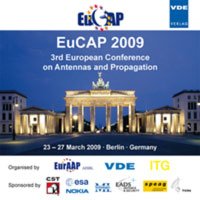SAR Measurements for Several Two Elements Phased Antenna Array Handsets
Konferenz: EuCAP 2009 - 3rd European Conference on Antennas and Propagation
23.03.2009 - 27.03.2009 in Berlin, Germany
Tagungsband: EuCAP 2009
Seiten: 4Sprache: EnglischTyp: PDF
Persönliche VDE-Mitglieder erhalten auf diesen Artikel 10% Rabatt
Autoren:
Moustafa, J.; Abd-Alhameed, R. A.; Zhou, D.; See, C. H.; McEwan, N. J.; Ramli, K. N.; Abidin, Z. Zainal (Mobile and Satellite Communications Research Centre, University of Bradford, Bradford, West Yorkshire, BD7 1DP, UK)
Excell, P. S. (Glyndwr University, Wrexham, LL11 2AW, Wales, UK)
Inhalt:
In recent years, electromagnetic dosimetry has been increasingly oriented towards the evaluation of energy deposition in the human body due to an exposure to cellular telephones. In this case of near-field exposure, the significant dosimetric parameters are the specific absorption rate (SAR). This kind of definition causes a technical problem, because the SAR inside a person cannot be measured. Therefore, some indirect way is needed to establish the compliance of a certain device with the basic restrictions. This paper therefore mainly deals with SAR measurement for phased antenna array including some antenna prototypes. Some of these measurements on one other form of the array (using helices) have been only optimised empirically. The measurements use the dosimetric techniques already developed for the compliance testing of mobile telephones. The experimental approach is then described, based on invasive SAR measurements by means of miniaturised E-field probes inside a control phantom. The relative measured SAR values between the uses of phased antenna array to the conventional single antenna handset are presented.


